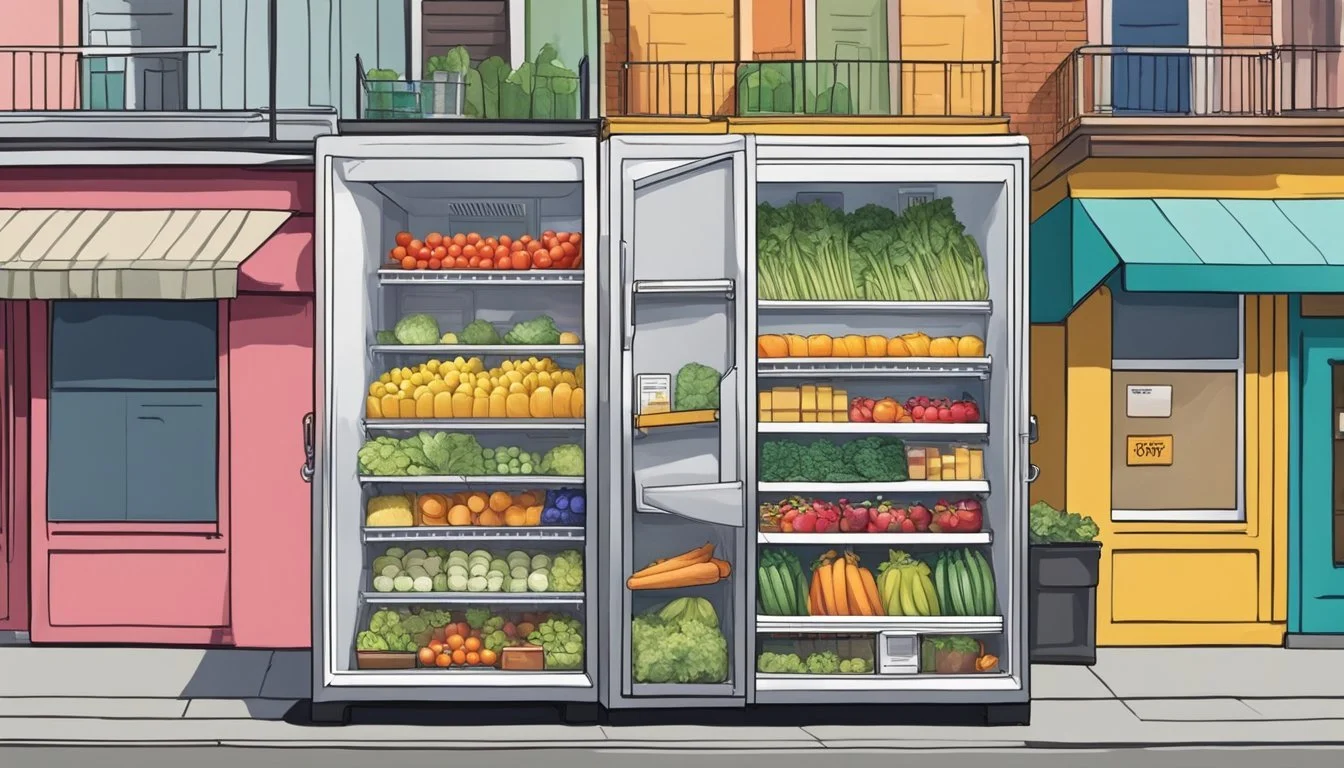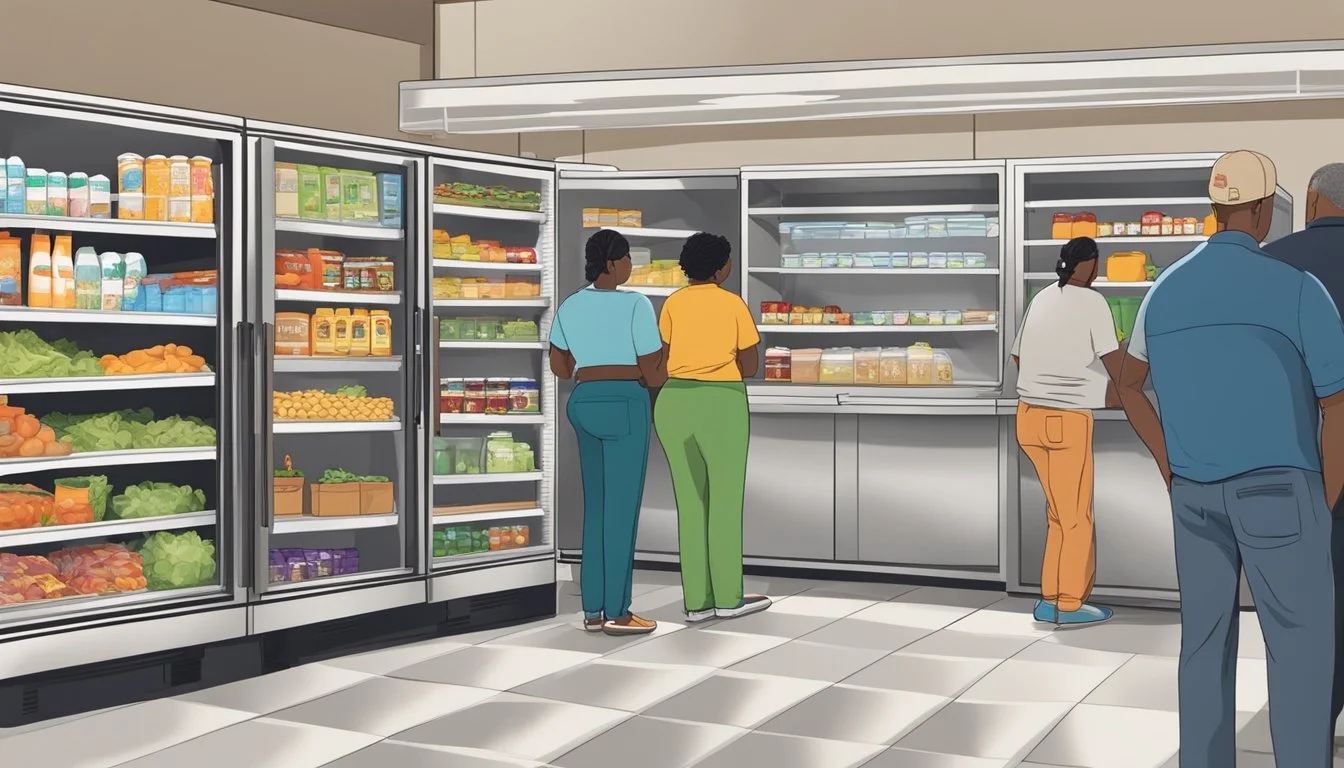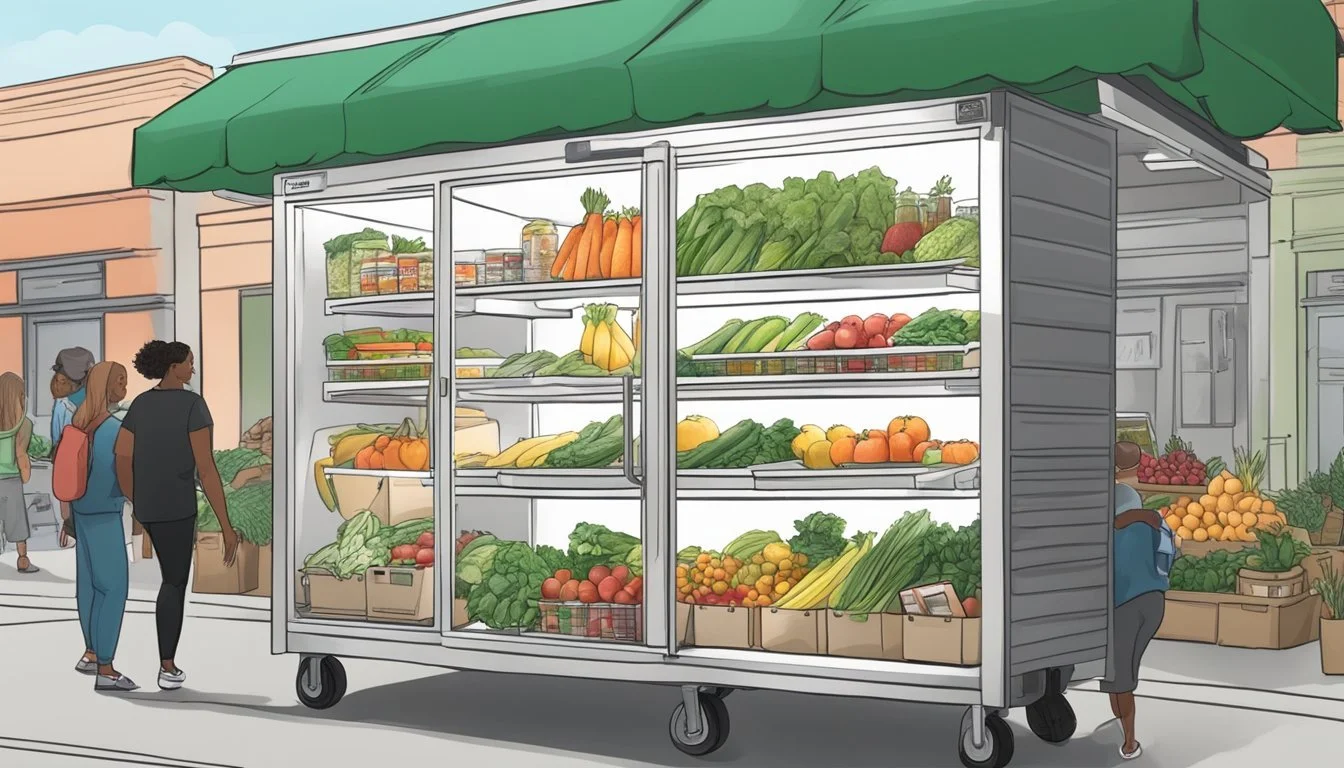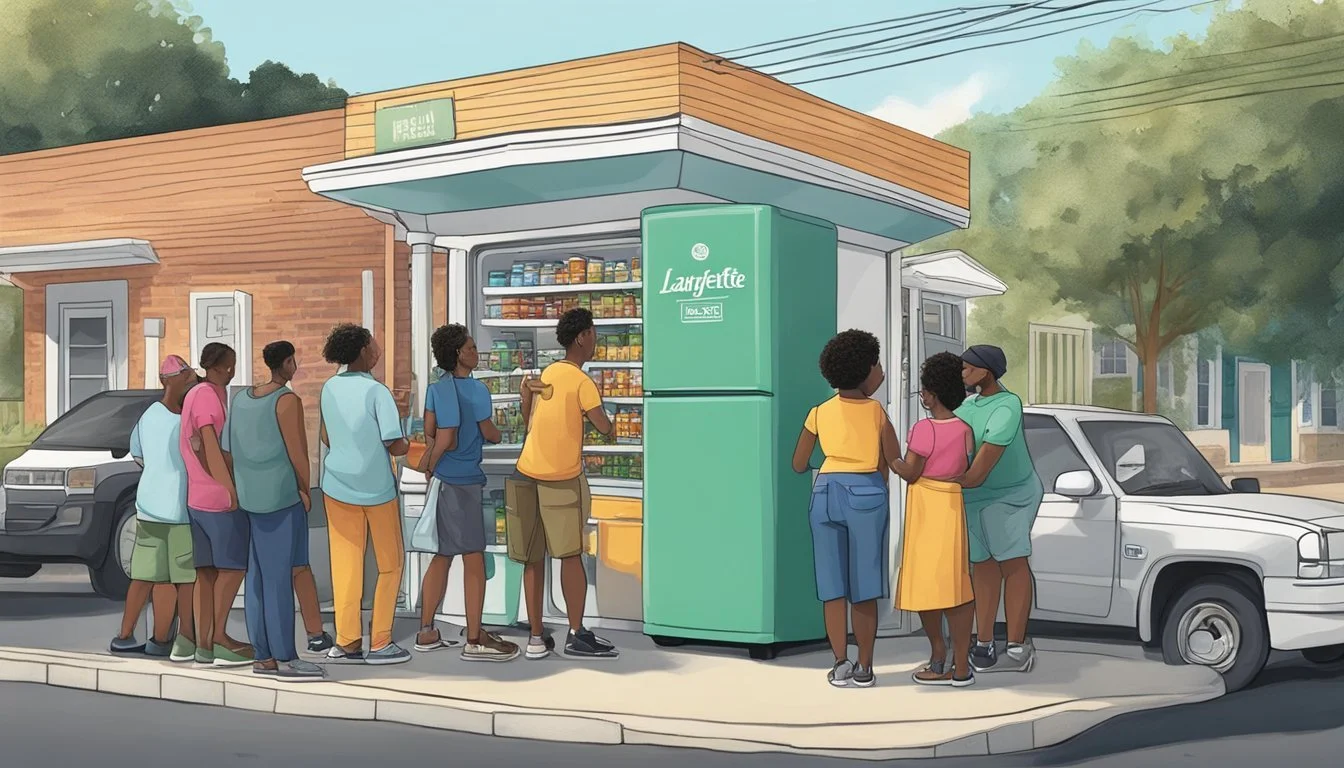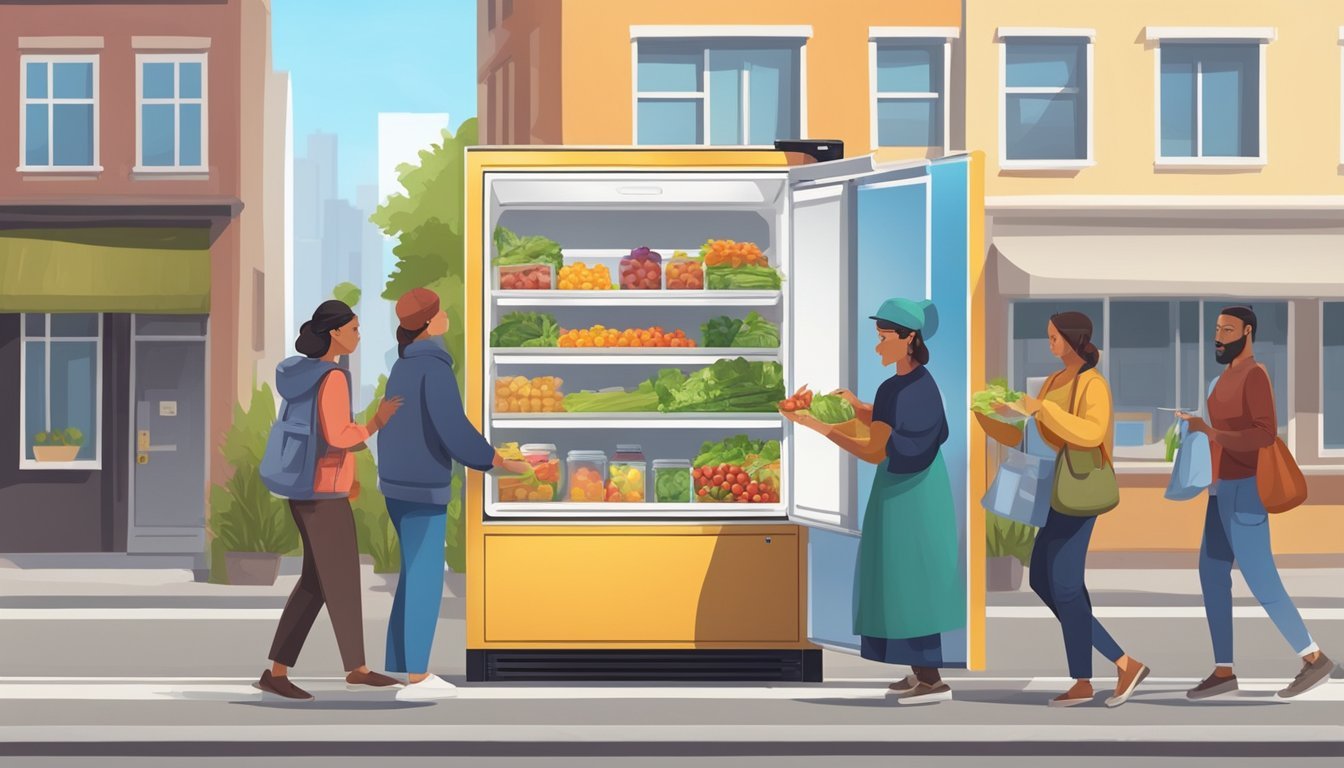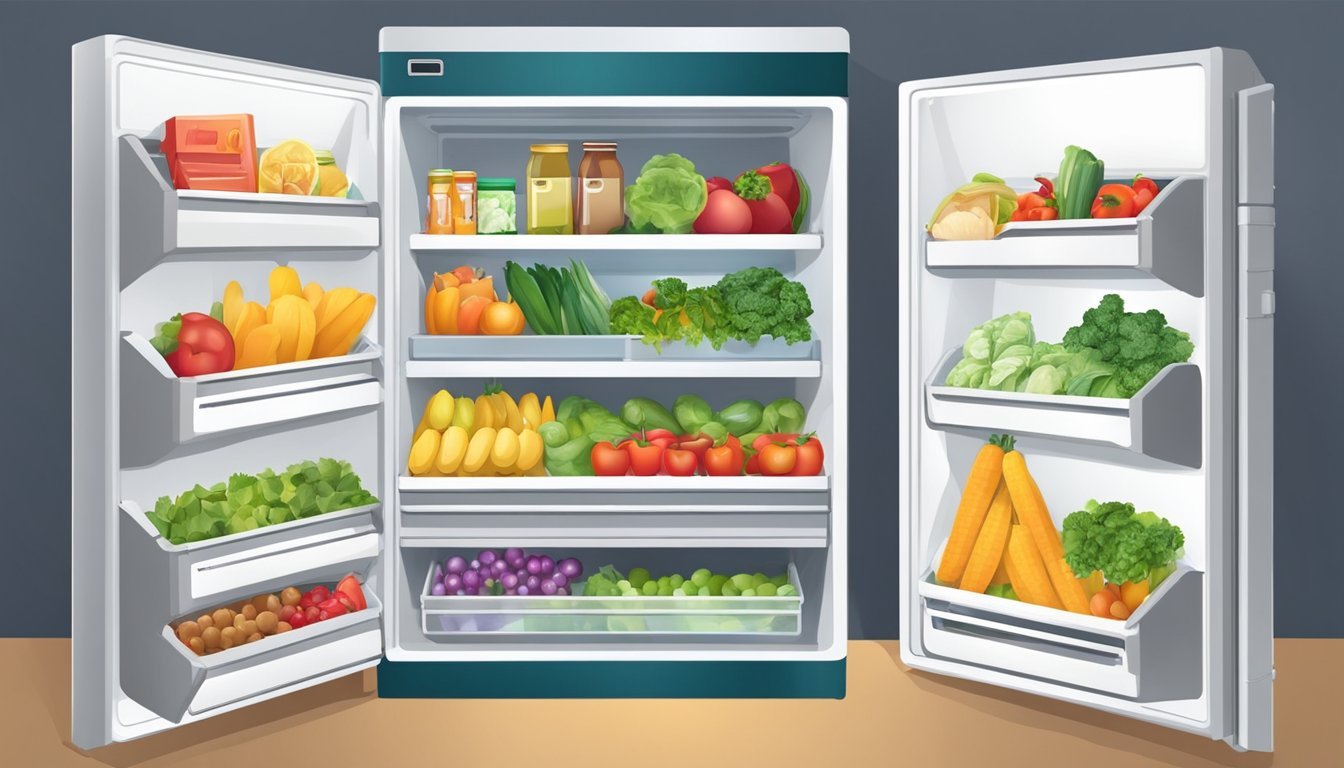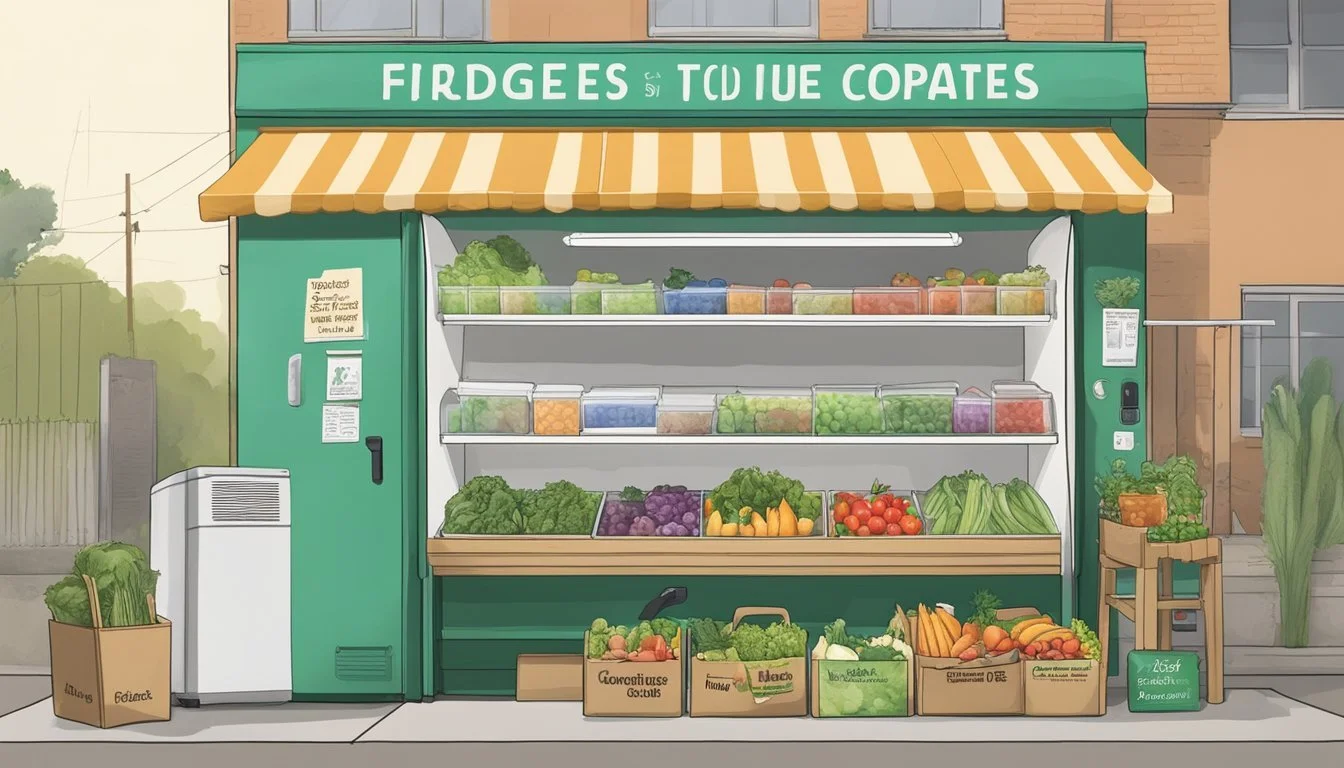Lafayette, LA Community Fridge
Tackling Food Insecurity Together
In Lafayette, Louisiana, a city known for its vibrant culture and community spirit, a novel approach to tackling food insecurity has taken root in the form of a community fridge. This initiative, resonating with the ethos of mutual aid, provides residents with a means to both contribute to and benefit from a shared resource that offers free food. The fridge showcases the community's collective response to food scarcity, a prevalent issue that affects many cities across the United States.
Strategically positioned to serve those in need, the Lafayette Community Fridge operates on a simple principle: take what you need, leave what you can. This system encourages a sustainable cycle of giving and receiving, rendering the fridge a crucial hub for food donations that include perishable items requiring refrigeration. Spearheaded by local individuals and groups, the project gains momentum through social media, community involvement, and support from organizations dedicated to social welfare.
As it emerges as a bright spot of cooperative support, the Lafayette Community Fridge not only symbolizes the fight against hunger but also forges a deeper sense of community. Its presence invites residents from all walks of life to engage in an act of collective caring, positioning it as a practical and symbolic cornerstone in Lafayette’s efforts to address food insecurity among its population.
Background of Food Insecurity in Lafayette
Lafayette, Louisiana, has grappled with food insecurity, especially in low-income areas categorized as food deserts. Food insecurity is defined as the lack of consistent access to enough food for an active, healthy life, affecting various Lafayette communities. Several factors contribute to this pervasive issue, including unemployment and economic instability.
Food Deserts in Lafayette
A food desert is an area with limited access to affordable and nutritious food.
In Lafayette's Northside and other areas, the scarcity of grocery stores offering fresh produce has been identified.
Economic Factors
Louisiana is ranked third in the nation for food insecurity.
Unemployment can exacerbate the inability for families to afford sufficient food.
Community Efforts
Community fridges and food pantries have been established to provide relief.
These efforts are particularly vital for low-income residents who are disproportionately affected.
The Fightinville Fresh Market at 315 Simcoe St. is a local initiative addressing these challenges. It is one of several community-led solutions to combat food insecurity in Lafayette's Northside. The Lafayette Community Fridge and the Fightingville Fresh Community Food Pantry are examples of how community members are driving positive change through resource sharing and mutual aid.
The Emergence of Community Fridges
Community fridges have surfaced as a progressive solution to combat food insecurity. They operate on the principles of mutual aid and solidarity within communities, providing a means for individuals to both give and receive without barriers.
Definition and Mission
Community fridges, often a part of a broader mutual aid network, are public refrigerators that offer food free of charge to anyone in need. The mission driving these fridges is straightforward: to reduce food insecurity and waste by allowing community members to leave food for others and take what they need. This model operates under the premise of "take what you need, leave what you can", serving not only as a hub for food sharing but also as a symbol of community trust and support.
Growth During the Pandemic
The pandemic has exacerbated food insecurity across the globe, creating a surge in demand for accessible food sources. In response to this, the number of community fridges has seen a substantial increase, becoming more prevalent as a life-saving resource for many. These fridges provided a contactless way of supporting those in need, especially during a time when traditional food aid services faced operational challenges due to health and safety restrictions.
Lafayette Community Fridge Origins
The Lafayette Community Fridge in Louisiana was inspired by similar initiatives that rose to prominence in cities like Los Angeles, New York, and New Orleans. Its origins lie in the collective effort of community members who recognized the urgency to address local food insecurity issues. The Lafayette initiative reflects a growing trend of community-driven efforts to provide free, accessible food options, particularly throughout times of crisis. It began as a donation drop-off location, offering refrigerated and frozen items to ensure the availability of a diverse range of food.
Operational Aspects of the Lafayette Community Fridge
The Lafayette Community Fridge operates as a beacon of mutual aid, addressing food insecurity with a system sustained through community volunteerism and donations. It ensures easy access to food while maintaining strict safety and stocking protocols.
Location and Accessibility
The Lafayette Community Fridge is strategically located on Simcoe Street, providing easy access to residents, especially those in underserved areas. The location was chosen to ensure that individuals in food deserts have proximity to fresh food options.
Managing Stock and Safety
Volunteers and community members regularly stock the fridge with fresh produce and other food items. Guidelines are in place to ensure that no raw meat is offered in the fridge to maintain safety. Donations are monitored, and stock is rotated to guarantee that only safe, edible, and nutritious food is available to those who need it.
Checklist for Stock Safety:
Donated produce is fresh and within use-by dates
All items are checked for packaging integrity
Gloves are used by volunteers handling the food
Volunteer Coordination
The success of the fridge relies heavily on the dedicated volunteers who manage the operations. They coordinate the stocking, cleaning, and organization of the fridge. Interested individuals can reach out to donate their time or resources, and schedule slots to ensure a systematic approach.
Volunteer Tasks:
Donation acceptance and sorting
Fridge cleaning and sanitization
Shift management for round-the-clock access
Volunteers are the backbone of the Lafayette Community Fridge, ensuring its continuous operation and access to all.
The Role of the Community and Partnerships
The Lafayette Community Fridge operates on a model that hinges on robust community involvement and strategic partnerships. It leverages these collaborations to combat food insecurity in the area, providing a constant stream of resources to individuals in need.
Community Involvement
In Lafayette, the community plays a pivotal role in maintaining and stocking the community fridge. Local residents help by donating essential items such as non-perishables, paper towels, and other community care supplies. This demonstrates a grassroots effort where neighborhood solidarity is key to the initiative's success. They actively participate in both using the resources available and ensuring they are accessible to others.
Partnership with Grocery Stores and Restaurants
Strong partnerships with grocery stores and restaurants have allowed the Lafayette Community Fridge to source a regular supply of food donations. These partnerships ensure that excess or near-to-expiration foods are redistributed rather than wasted. Through consistent donations, these collaborations guarantee that the local community fridge maintains a stock of fresh and nutritional food options for those in need.
Local Businesses and Donations
Local businesses in the Lafayette area also play a significant role in the sustainability of the community fridge. By contributing donations and other support, these businesses help foster the spirit of community care. This type of participation from local businesses not only provides essential resources but also encourages a unified community effort to tackle food insecurity.
Impact on Local Residents
The Lafayette Community Fridge is a critical initiative combatting food insecurity and fostering community solidarity. It stands as a testament to the powerful impact community organization can have on low-income and black households by providing access to fresh food.
Tackling Food Insecurity
In Lafayette, community fridges like the Fightinville Fresh Market address the pressing issue of food insecurity. Food insecurity affects a significant portion of Louisiana's population, with the state ranking third in the nation. These fridges offer free, accessible fresh food options to households that are most in need, directly contributing to the reduction of hunger in the area.
Strengthening Community Bonds
Community-led food projects, including community fridges and pantries, have been instrumental in not just feeding people but also in strengthening bonds within the community. They rely on a model of solidarity, not charity, with residents and local organizations actively participating through donations and volunteer work. This collaboration reinforces the connections among residents and cultivates a spirit of mutual aid.
Success Stories
While individual stories vary, the pervasive sentiment around the Lafayette community fridge initiative underscores its success. The projects maintain the dual goals of alleviating hunger and fostering community cohesion. They have become a vital component of neighborhood lifelines, demonstrating the collective power in supporting one another through tangible acts of solidarity.
Guidelines for Contributing
Contributing to the Lafayette Community Fridge is straightforward, but it requires adherence to specific guidelines to ensure safety, health, and effectiveness. These rules help to sustain the project and make it a reliable resource for those in need.
What to Donate
Donors should focus on providing:
Non-perishable items: Canned goods (with intact labels and within the expiration date), sealed packaged foods.
Fresh produce: Fruits and vegetables that are in good condition and not overripe.
Items that are not accepted include:
Home-cooked meals (how long do cooked meals last?)
Opened packages or homemade items due to health regulations
Alcoholic beverages or high-sugar drinks
Safety and Health Regulations
To maintain a high standard of safety and health, contributors must ensure that:
All donated food is checked for expiration or spoilage.
Donations are stored properly before drop-off to prevent contamination.
Produce is washed and, if possible, prepackaged in clean, see-through containers.
How to Organize a Donation Drive
When organizing a donation drive, one should:
Collaborate with local businesses or organizations for a broader reach and more substantial impact.
Educate participants on acceptable donation items to avoid food waste.
Schedule regular drop-offs to the community fridge to ensure a continuous and fresh supply.
Not only do these drives promote a sustainable way to redistribute excess food, but they also foster community involvement and awareness about food insecurity in Lafayette.
Advocacy and Future Directions
The Lafayette Community Fridge initiative is at a pivotal point where increasing public awareness, scaling the model, and ensuring sustainability are crucial for its continued success and impact on food insecurity.
Raising Awareness
Efforts have been made to boost public engagement through social media campaigns, aiming to educate the Lafayette community about the project's mission and services. The use of platforms like Facebook has proven essential for reaching a broader audience, keeping community members informed, and rallying support.
Expansion and Long-Term Goals
Erin Quinn, a dedicated advocate for the initiative, has set sights on not only maintaining but expanding the reach to places like New Orleans and Laplace. The goal is for these fridges to serve as a replicable model for other cities. This expansion emphasizes the importance of the non-profit sector's role in fostering community care and addressing widespread food insecurity.
Building a Sustainable Model
Sustainability remains a core focus, with strategies in place to ensure resources and food supplies remain steady. This includes seeking proof of impact and feedback to attract ongoing support and resources. Partnerships with local businesses and continuous community involvement are critical to constructing a sustainable framework for the project.
How to Get Involved
The Lafayette Community Fridge offers multiple ways for individuals and organizations to contribute to their mission of reducing food insecurity. Whether it's through giving time, financial support, or raising awareness, each action plays a vital role in the initiative's success.
Volunteering Opportunities
Volunteers are the backbone of the Lafayette Community Fridge. They can:
Stock and clean the fridge: Ensure the fridge is tidy and filled with fresh food for the community.
Outreach: Engage with community members to spread the word about the fridge's mission and services.
Making Monetary Donations
Monetary donations are essential for the Lafayette Community Fridge to sustain its operations. Donors can:
Donate online: Visit the organization’s website or its social media platforms to make a secure donation.
Set up a recurring donation: Offer ongoing support by setting up a monthly contribution, allowing for long-term planning and sustainability.
Promoting the Initiative
Promotion helps to garner support and maintain the community aid project. Ways to promote include:
Share on social media: Utilize platforms like Facebook to share information about the Lafayette Community Fridge.
Word-of-mouth: Encourage friends and family to support the cause, be it through donations or volunteer work.
Appendix: Resources and Contacts
This section provides essential resources and contacts for the Lafayette Community Fridge initiative, ensuring readers can access further information and support the cause effectively.
Contact Information
Lafayette Community Fridge
Email: Not publicly available
Contact Person: Erin Quinn (Point of Reference)
Location: Lafayette, LA
Educational Material
The initiative emphasizes food security education within the Acadiana region. Educational materials can typically be found by visiting the local Lafayette Community Fridge location or by reaching out to the contact person.
External Links
Facebook Page: Lafayette Community Fridge
Acadiana Resources: Resources pertinent to the wider Acadiana region may be accessible via community social media pages and local community centers.
Please note that while the Lafayette Community Fridge has a presence on Facebook, the specific website details are not provided in the search results. Users seeking further information are encouraged to follow their Facebook page or directly contact Erin Quinn for in-depth educational materials and opportunities to contribute.

